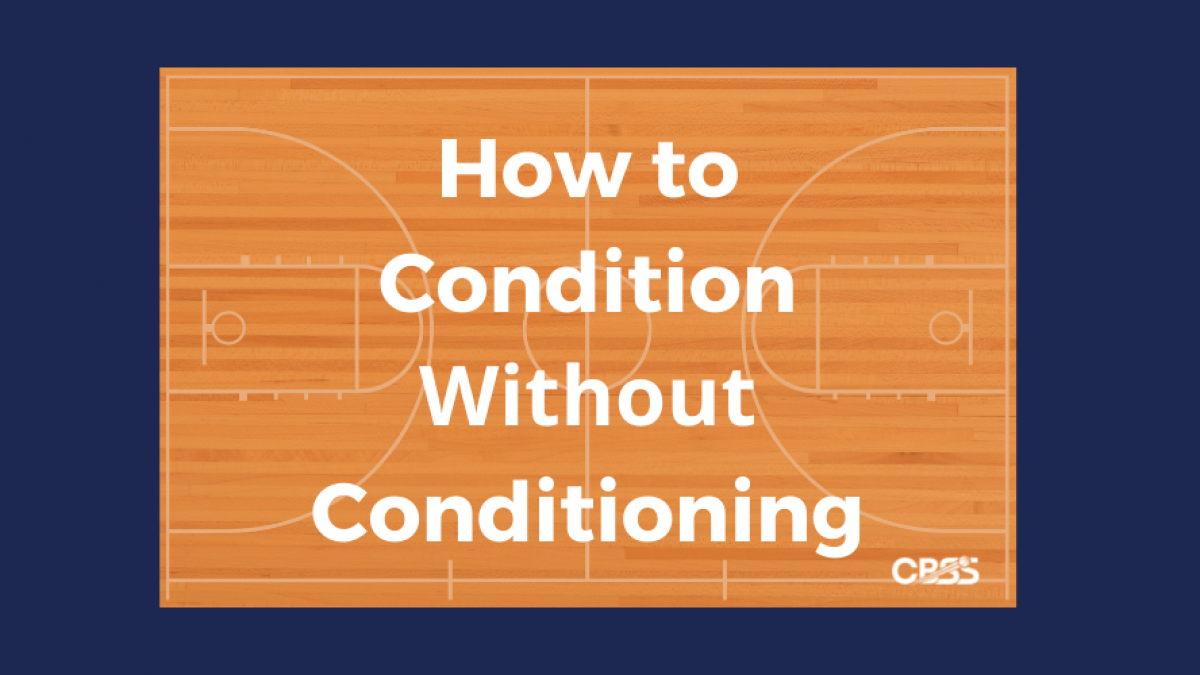Condition Without Conditioning

Old School Conditioning...
I can remember as a player dreading the end of practice because that's when our coaches killed us with specific conditioning drills.
It usually consisted of line drills where we ran and touched the foul line and back, half-court and back, other foul line and back, other baseline and back. If you played basketball, I might be causing a visceral effect in you right now!
Sometimes we ended practice with numerous defensive shuffles or closeout drills. Players made sure to stay close to the garbage can because there was always a good chance you could vomit at any minute.
After being tired from a demanding two-hour, the body was driven deeper into an overly fatigued state. The next day, the same drills! Coaches would be upset when you showed up to practice with a groin injury, shin splints, knee pain, ankle and foot pain, or low back pain. How could those injuries possibly have happened? I believe you can quickly answer that question!
Conditioning sucks! There was no way around it.
Here's the bottom line...
Basketball players have to be in shape to compete at a high level for an entire game. How they get in shape is what this post is all about.
The players' body reacts to the stress placed on them. It has no idea which drills the is stress. So why do we waste valuable time with drills that don't teach a damn thing? As a coach, it is not your job to make highly conditioned players void of skill. It's your job to make well-conditioned players with high skills. Remember, great conditioned players don't make baskets. Players who have shooting skills make baskets.
If you want to improve individual skills, tactical skills, and reading skills, then why not put players in positions to work on these skills more often? Instructing a player to dribble full-court against a defender builds reading and tactical skills, individual dribbling skills, and, you guessed it- conditioning.
Build specific skills and conditioning when your team runs full-court fastbreak scenarios for multiple reps in a row.
Doing the 30-second "X" layup drill where the player moves from the elbow to elbow, making as many layups as possible in 30-seconds is great specific conditioning.
If your players run the full court for conditioning, why not have a ball in their hands and shoot as much as possible?
Best Strategy...
When choosing to use this strategy, you achieve better buy-in, more chances to improve player skills, improve conditioning, and your players are learning how to read situations.
Coaches who think it builds mental toughness in their players by crushing them with overwhelming conditioning are misguided. Conditioning is important! How you attain it is even more important!
One of the best ways to condition your athletes for basketball is to make them FASTER!
More speed means the players become more efficient when they don't have to run at maximum speeds. Meaning they can run at sub-maximal speeds, still being faster than before but not using as much energy.
Categories: : art of coaching, basketball conditioning, basketball speed
 Lee Taft
Lee Taft 